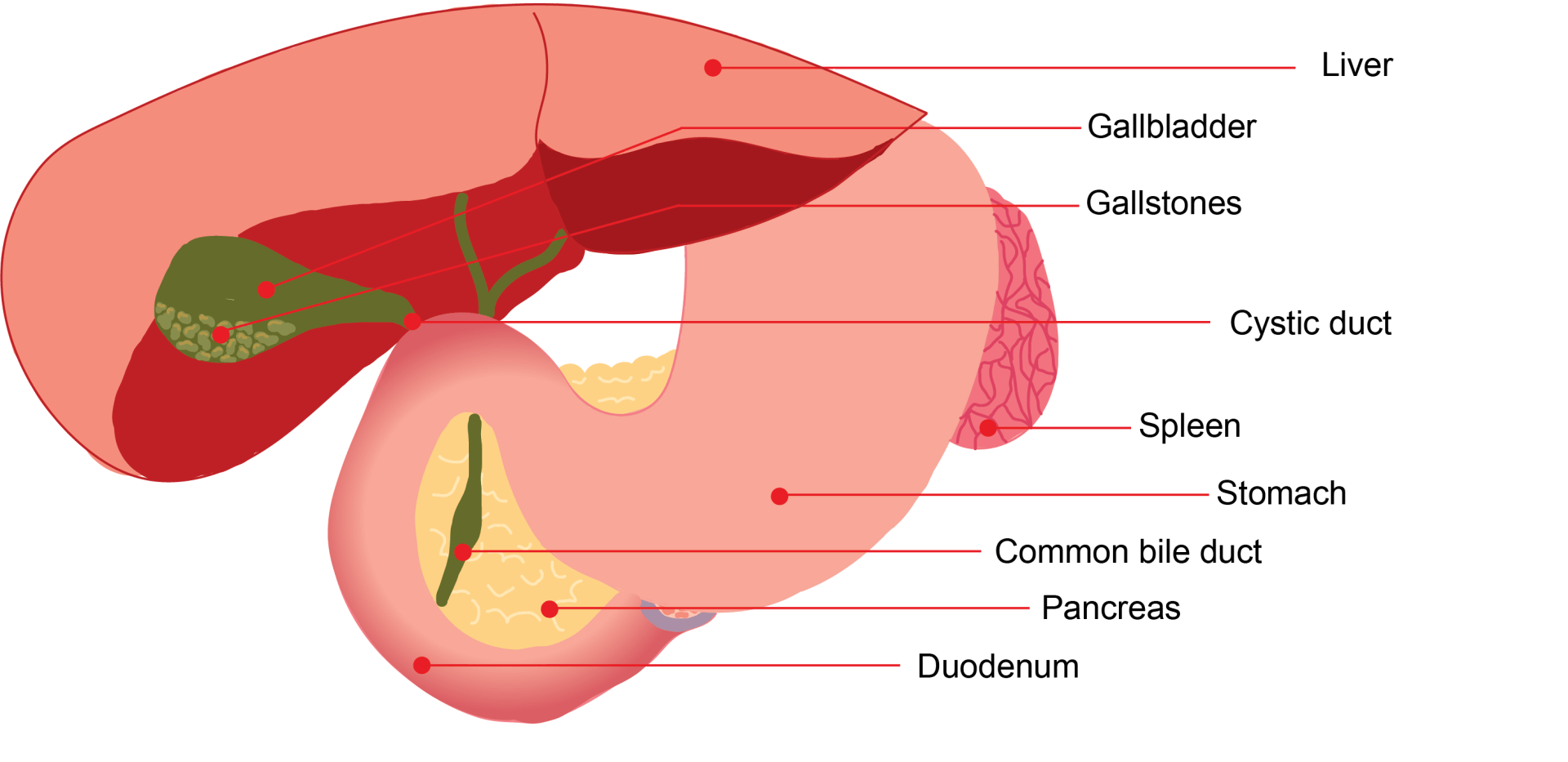GALLSTONES
What is the function of the gallbladder?
The gallbladder is a small pear-shaped organ that is attached to the underside of the liver. It functions as a storage reservoir for bile. With meals, the gallbladder contracts and empties the stored bile through a long tube (bile duct) into the small bowel.
Bile is a fluid that helps digestion by breaking down fats in food. It contains various substances, including bile pigments, bile salts, cholesterol and lecithin. It is produced by the liver and passed through the bile duct into the small bowel.
When the gallbladder is removed, bile will still flow from the liver to the small bowel to aid digestion but there is no longer a storage area for bile between meals.
What are gallstones?
Gallstones are literally small stones, often the size of a marble (but can vary from as small as a grain of sand to as big as a golf ball) that form in the gallbladder. When the substances within bile become unbalanced, some of the chemicals solidify and form gallstones. Most gallstones are made mainly of cholesterol.
Who is at risk of developing gallstones?
Around 1 in 10 adults develop gallstones.
Certain factors increase the risk of developing gallstones
- Increasing age
- Female gender
- Some ethnic groups
- Multiple pregnancies
- Obesity
- Rapid weight loss, especially after weight loss surgery
What problems can gallstones cause?
About 1 in 3 people with gallstones develop symptoms and complications. These include
Biliary Colic
This is severe pain in the upper abdomen which can extend towards the right-hand side and to the back. It typically occurs after meals and lasts from minutes to hours. It may be associated with bloating, nausea or vomiting.
Cholecystitis
This is inflammation of the gallbladder which can progress to an infection. Symptoms usually develop quickly and include abdominal pain, fever and being generally unwell.
Jaundice
This is yellowing of the skin or the whites of the eyes. It occurs if gallstones escape into the bile duct and cause a blockage. Bile cannot pass into the small bowel and instead seeps into the bloodstream. Cholangitis, a severe infection of the bile duct, may develop.
Pancreatitis
This is inflammation of the pancreas (another digestive organ). It occurs if small gallstones escape into the bile duct and pass beyond the pancreas resulting in inflammation.
Gallstone Ileus
This is a rare form of bowel obstruction. Large gallstone(s) can erode through the gallbladder into the adjacent bowel and cause a blockage.
How are gallstones diagnosed?
Gallstones are diagnosed by an ultrasound scan.
What are the treatments for gallstones?
Symptoms due to gallstones tend to recur if left untreated. Complications due to gallstones (e.g. cholecystitis, cholangitis, pancreatitis) require urgent treatment.
The recommended treatment for gallstones that have caused troublesome symptoms and/or complications is surgery to remove the gallbladder. The standard modern technique is through keyhole surgery, an operation called laparoscopic cholecystectomy.
Related Information
For Patients
First Visit Guide Fees & Payments Private Patients NewsletterFor Referrers
Make a Referral Newsletter Useful ResourcesQuick Enquiry
Thank you for contacting us. We will get back to you as soon as possible.
Oops, there was an error sending your message. Please try again later.


